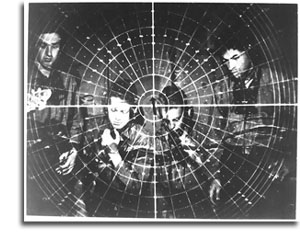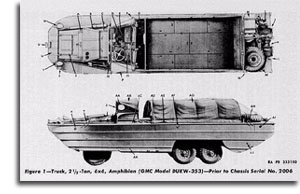| The DUKW John C. Garand and the M-1 |
![]()
In June of 1940, President Franklin D. Roosevelt established the National Defense Research Committee "to coordinate, supervise, and conduct scientific research on the problems underlying the development, production, and use of mechanisms and devices of warfare." Much of this work was done under the strictest secrecy. In June of 1941 The Office of Scientific Research and Development (OSRD) superseded the committee structure. OSRD projects gave the United States and Allied troops more powerful and more accurate bombs, more reliable detonators, lighter and more accurate weapons, safer and more effective medical treatments, and more versatile vehicles.
The DUKW
Of
all of the scientific and technical projects undertaken by the National
Defense Research Committee and the Office of Scientific Research and Development,
the story of the DUKW is perhaps the most interesting example of the resistance
to new technologies. Its introduction and deployment required an uphill
battle by civilian scientists but demonstrated the stunning successes
achieved when the military finally listened.
DUKW (pronounced duck) is the improbable-looking amphibious truck pictured here.
Scientists planned DUKW as an Army truck that could also cross rivers and carry men and material ashore across beaches. Initially the Army wanted no part of this silly civilian truck. Even after the completion of a prototype DUKW the Army took no interest until engineers used the prototype to save the lives of seven Coast Guardsmen grounded in a storm on the back shore of Cape Cod. Suddenly the Army was interested. Ultimately DUKW was a vital factor in landings in the Pacific, in Africa, and on the beaches of Normandy. At Normandy alone, DUKW carried 18 million tons ashore over the course of the 90 days when the enemy held all available ports.

